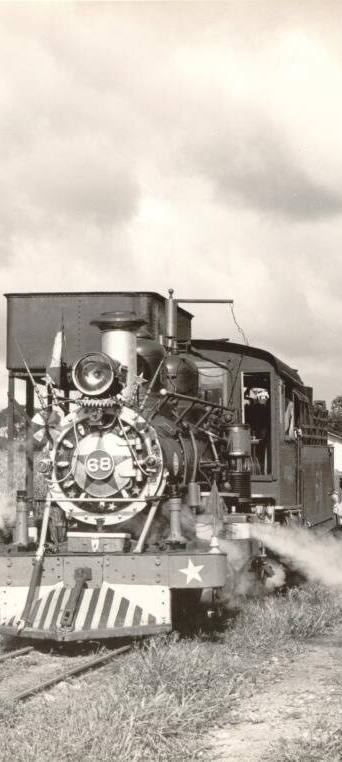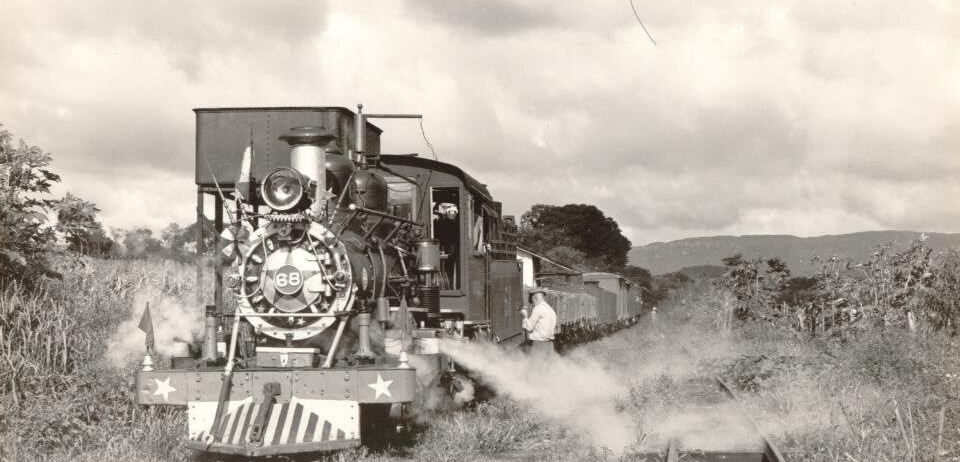RAILROADS IN BRAZIL
Brazil's first railway was designed to connect areas producing raw materials to ports, easing their transport. Inaugurated in 1854, the Estrada de Ferro Dom Pedro II (Dom Pedro II Railway) in Rio de Janeiro was later renamed Estrada de Ferro Central do Brasil (Central do Brasil Railway) in 1889.
During Getúlio Vargas' presidency in 1930, roads took precedence over railways, leading to stagnated investments in rail infrastructure. This trend shifted under President Juscelino Kubitschek (1956-1961), who revitalized rail investments while also boosting the automotive industry and establishing Rede Ferroviária Federal S/A (Federal Railway Network Public Company). Despite these efforts, railway incentives were short-lived. In the 1960s, during the military dictatorship, many railway branches were deemed economically unviable and subsequently dismantled. The privatization of railways began in 1990, and today the network includes 13 regional grids operated by private concessionaires or publicly traded companies.
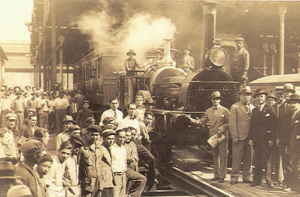
1920s employees on the Baroneza, the first locomotive to travel in Brazil on the Estrada de Ferro de Mauá (Mauá Railroad), inaugurated in 1854. João Emilio Gerodetti and Carlos Cornejo, undated. Personal collection.
WHAT ARRIVES WHEN THE TRAIN PASSES
The railway arrived in Brazil alongside the new technologies and ideas incorporated into the global logic during the Second Industrial Revolution, such as the belief in the universalization of economic development. The construction and expansion of railway lines and telegraphs not only reignited but also provided concrete foundations for the dream of progress that was already part of the Brazilian imagination. Distances were reduced; the interiors and capitals were interconnected; people and goods could reach farther, faster, and more safely. Communication was optimized, and access to information was facilitated.
THE TELEGRAPH
The advent of the telegraph in Brazil coincided with the expansion of railroads and steam trains, revolutionizing the country's communication landscape. This technology enabled quick and efficient long-distance message transmission through electrical signals along a conductor wire, with Morse code translating signals into readable text.
Integrated into railway operations, the telegraph facilitated seamless station-to-station communication, enabled precise train tracking, improved scheduling efficiency, and provided immediate responses to unexpected situations.
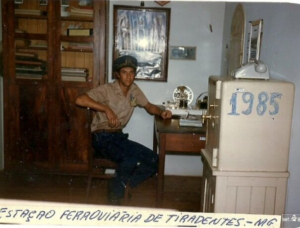
Train driver Moacir Silveira sitting at the telegraph table inside Tiradentes Station. Author unknown, 1985. Moacir Silveira’s collection.

Tiradentes Station agent João Carlos using the telegraph. José Geraldo Caldas, 1970s. Personal collection.
THE MAIL COMPANY: OS CORREIOS
Trains played a crucial role in transporting mail, facilitated by a dedicated Mail Car. Postal workers gathered letters and packages at the station for delivery. The mail car also transported newspapers and magazines from Rio de Janeiro, which served as Brazil's capital until 1960.
“On the train, there was a separate mail car. I would go there to buy newspapers like O Jornal do Brasil and O Globo. My father and I would read everything. These newspapers came from Rio de Janeiro. That's why people over 50 around here in Minas, and especially in São João del-Rei, tend to support Rio de Janeiro's football teams more than Minas Gerais’s teams. We only got news from Rio de Janeiro back then.”
Waldonier Trindade Fonseca, public servant from São João del-Rei and son of the former head of the Tiradentes Railway Station.
CERAMICS
Ceramics were the main product of Tiradentes to be transported and distributed by the railroad. Founded by Italian immigrant Alberto Paolucci around 1913, Fábrica Cerâmica Progresso Industrial LTDA (Industrial Progress Ceramics Factory) became the city’s largest employer during the early decades of the 20th century. Strategically built near Tiradentes Station, the factory produced bricks, tiles, and various types of ceramic products that were sold across Brazil. Production and distribution of ceramics were so significant to the region’s economy that a railway siding was added, leading directly into the factory to facilitate the loading of railcars.
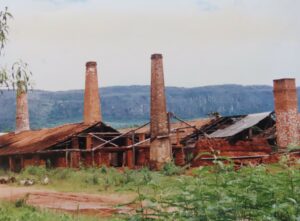
Fábrica Cerâmica Progresso Industrial Ltda. – 1990s
Luiz Cruz, 1990s. Author's collection.
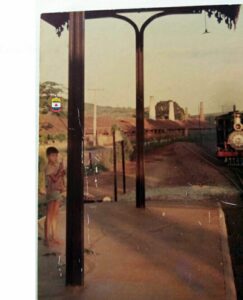
Tiradentes Station Platform and Railway Siding for the Fábrica Cerâmica Progresso Industrial Ltda. Humberto Paolucci, 1976. Family collection.
ANIMALS, FOOD AND CRAFTS
On a smaller scale, food items like fruits and milk, along with live cargo such as horses and pigs, were shipped from the city. Products of these types were also brought into town. Additionally, trains transported small-scale producers and vendors of cheeses, sweets, fruits, and textiles, who traveled in passenger cars with the aim of selling their goods in the towns where the train made stops.
INDUSTRIAL PRODUCTS
Industrialization in the late 19th century significantly transformed Brazilian eating habits, shifting from traditionally prepared foods to industrially produced goods. These processed foods were typically transported by train, with factories commonly located near railway stations to facilitate distribution. Simultaneously, industrial printing developed, producing packaging, cans, and labels for these products, such as butters, candies, sweets, caramels, beverages, and fruit jams. These items were marketed with vibrant colors and eye-catching designs.
The primary technique used for illustrating these packages was lithography, which involved creating engravings on limestone base using greasy pencils and brushes.
It was typical for these lithographic prints to feature the city of production, the local railway station, or the railway serving as the main distribution channel.
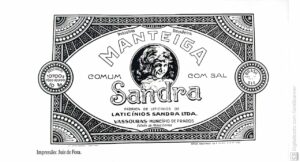
“Salted Butter – Sandra Dairy – Prados, Western Minas Railroad” – Label for a can of butter produced in Prados-MG. Industrial stamping in Juiz de Fora, undated. Lithographic Catalog – Litografia de Lotus Lobo, 2018.

“Best Quality Butter – Brand: Pipoca – Itapecerica, Western Minas Railroad” – Product packaging featuring the EFOM brand and identification of the production site. Industrial stamping in Juiz de Fora, undated. From the book “Memória Ferroviária” (Railway Memories) , by Luiz Antonio da Cruz, 2016.
LARGO DO Ó ENGRAVING HOUSE
In 1984, Casa de Gravura Largo do Ó (Largo do Ó Engraving House) was inaugurated in Tiradentes as a studio and residence for artists specializing in artistic lithography.
The House quickly became a center of cultural vibrancy, promoting local art, fostering new ideas, social action, and community interventions. The founders, Lotus Lobo, Fernando Pitta, and Maria José Boaventura, along with other engaged participants, played significant roles in the 1991 measures taken to preserve the operation of the train.
To enhance the regional identity and its ties to artisanal, artistic, and architectural production—closely linked to the railway—the brand for the Largo do Ó Engraving House was designed by visual artist Maria José Boaventura. The logo, featuring a star, was inspired by decorative elements from EFOM Railway Station in São João del-Rei.






